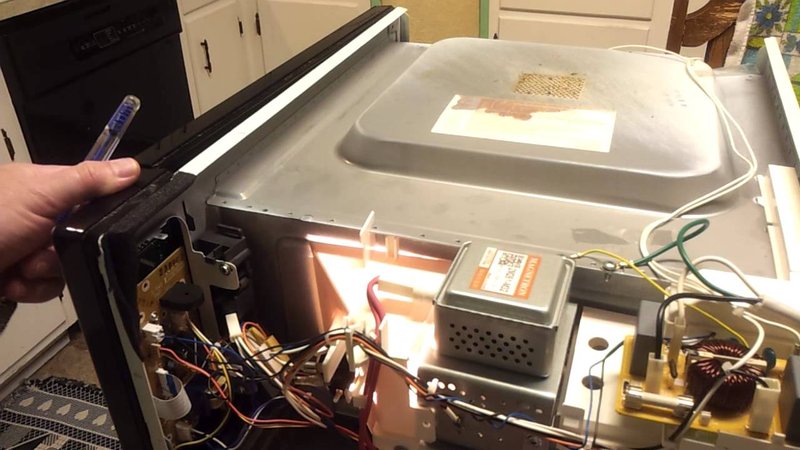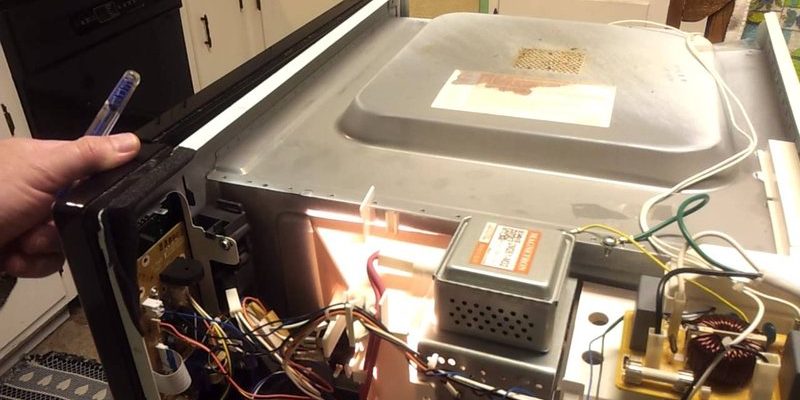
Before you panic, let’s understand what this error is trying to tell you. Essentially, an “E3” error indicates that the microwave’s primary function – heating your food – is compromised. It often points to an issue with the microwave’s sensor control, particularly the humidity sensor. This sensor plays a crucial role in regulating cooking time and power by sensing the steam that your food emits. If left unfixed, it can lead to unevenly cooked meals or, worse, the complete failure of your microwave. So, here’s the deal: knowing why this happens and what to do next can save you a lot of hassle.
Understanding the E3 Error Code
Let’s break it down. What exactly is happening inside your microwave when this E3 error code shows up? Think of your microwave as a mini chef, assessing the steam levels to cook your meal perfectly. The humidity sensor is like its special set of eyes. When this sensor encounters issues, it throws off the microwave’s cooking sequence, resulting in the E3 error. Much like how a car’s dashboard lights up when something’s wrong under the hood, this error code is the microwave’s way of asking for attention.
If the sensor malfunctions or becomes unresponsive, your microwave struggles to adjust the cooking time and temperature appropriately, leading to over or undercooked meals. You might be wondering, “Can I just keep using it?” Technically, you could continue to use the microwave, but it’s like driving a car with a check engine light on – it’s not advisable. Regularly ignoring this error can escalate the problem, potentially damaging other components or making repairs more expensive down the line.
Before you decide to overlook the E3, consider this: addressing the issue promptly can extend the lifespan of your microwave, maintain its efficiency, and ensure the safety of your kitchen endeavors. Fixing the sensor involves recalibrating or replacing it, sometimes requiring professional help. But don’t worry, we’ll explore more on troubleshooting and fixing this later.
Consequences of Ignoring the Error
So, what’s the worst that could happen if you decide to turn a blind eye to the E3 error? For starters, you’ll notice your meals aren’t heating up evenly. Some parts might be lukewarm while others are scorching hot. Imagine biting into a pizza slice where the cheese is molten yet the crust remains icy. Not an appealing thought, right? This inconsistency is a direct result of a faulty humidity sensor not detecting the right cooking stages.
Moreover, continuous operation under this error condition can lead to further internal damage. We’re talking about potential overheating of internal components, which might result in permanent damage that’s costly to repair. The appliance may start to exhibit strange behaviors, like shutting off randomly or failing to start altogether. Just like ignoring a flat tire can eventually damage the wheel, neglecting this error can wear down your microwave’s components prematurely.
Safety is another major concern. A malfunctioning microwave not only poses a risk to your food’s quality but also to your home’s electrical safety. Sparks, electrical shorts, or power trips can occur if overheating components are left unchecked. To prevent these issues, tackling the problem at its root is the best course of action.
How to Fix the E3 Error
Alright, let’s roll up our sleeves and see what you can do about this pesky error. First things first: unplug your microwave. This simple step can sometimes reset the system and clear minor technical glitches. Leave it unplugged for a couple of minutes and then power it back on. If the error persists, the humidity sensor likely needs closer inspection.
If you’re somewhat handy and feel comfortable, you can attempt a sensor check. Locate the sensor (usually affixed inside the microwave) and ensure it’s not obstructed or grimy. Cleaning the sensor carefully with a soft cloth can sometimes resolve the problem. Remember, the sensor is delicate, so handle it with care. For those who find this intimidating, or if the error continues, consulting a professional is the safest bet. They can accurately diagnose the issue and replace the sensor if necessary.
In the meantime, consider referring to your Panasonic microwave’s user manual. It often contains troubleshooting steps specific to your model. Engaging with online Panasonic support or community forums can also provide insights or solutions that’ve worked for others.
Preventative Measures and Maintenance Tips
Now that you know the ropes on managing an E3 error, let’s talk about preventing it from happening again. Regular maintenance and care of your microwave can ensure it runs smoothly for years. Much like how you’d service a vehicle regularly for peak performance, your microwave benefits from occasional check-ups and cleaning.
Start by keeping the interior of your microwave clean and free from food debris. Splattered bits can interfere with the sensor’s function, so make it a habit to wipe down the inside after each use. Another tip is ensuring your microwave is properly ventilated. Overheating often arises from blocked vents, which can exacerbate sensor issues.
Lastly, if your microwave is subject to heavy daily use, consider having it checked by a professional annually. Regular inspections can catch potential problems before they escalate, saving you from unexpected headaches. By staying on top of these small tasks, you keep your microwave in top-notch condition and your culinary projects running smoothly.
In conclusion, while it might be tempting to ignore the E3 error, addressing it head-on ensures better performance and safety in your kitchen. By understanding what triggers this error and how to tackle it, you’re well on your way to keeping your Panasonic microwave in excellent shape. Happy cooking!
